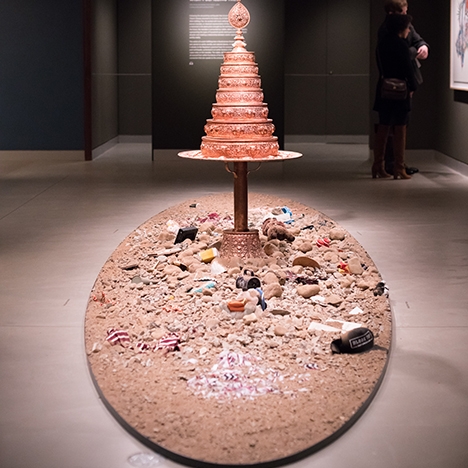
What sources of power might we find in the places that surround us? The natural environment wields its own power and can challenge us in extreme ways, as with the earthquake that devastated Nepal in 2015. Tsherin Sherpa’s Wish-fulfilling Tree finds resources to deal with these challenges through the time-honored local cultural traditions of his home city of Kathmandu, while at the same time looking to the future and the cosmos. As in in his other work, Tsherin Sherpa offers a contemporary take on a traditional art form, the metalworking of the Kathmandu valley. Having previously worked in the medium of thangka painting, this is his first large-scale sculptural installation. Local artisans helped to construct the central seven-layered mandala. The seven layers of the mandala may be considered an ideal model of the cosmos, and the motif of a wish-fulfilling tree evokes an idea of cosmic beneficence within South Asian religions. It also expresses hopes for the reconstruction of Kathmandu in the wake of the earthquake.
The rubble and found objects, representing items lost or destroyed in the earthquake, have been locally sourced wherever this installation has been installed. Outside of Kathmandu, in Hong Kong, Yinchuan, and now New York, materials have been incorporated from nearby construction sites. Beyond the earthquake, this might evoke the ongoing destruction and reconstruction that takes place in an ever-changing metropolis like New York, which can challenge and reshape residents’ sense of place.
Come view our Art of the Week in the exhibition Shrine Room: Wishes and Offerings.
- https://dev.rubinmuseum.org/images/content/7280/09.06.19artoftheweek__zoom.jpg
- https://dev.rubinmuseum.org/images/content/7280/09.06.19artoftheweek__zoom.jpg

